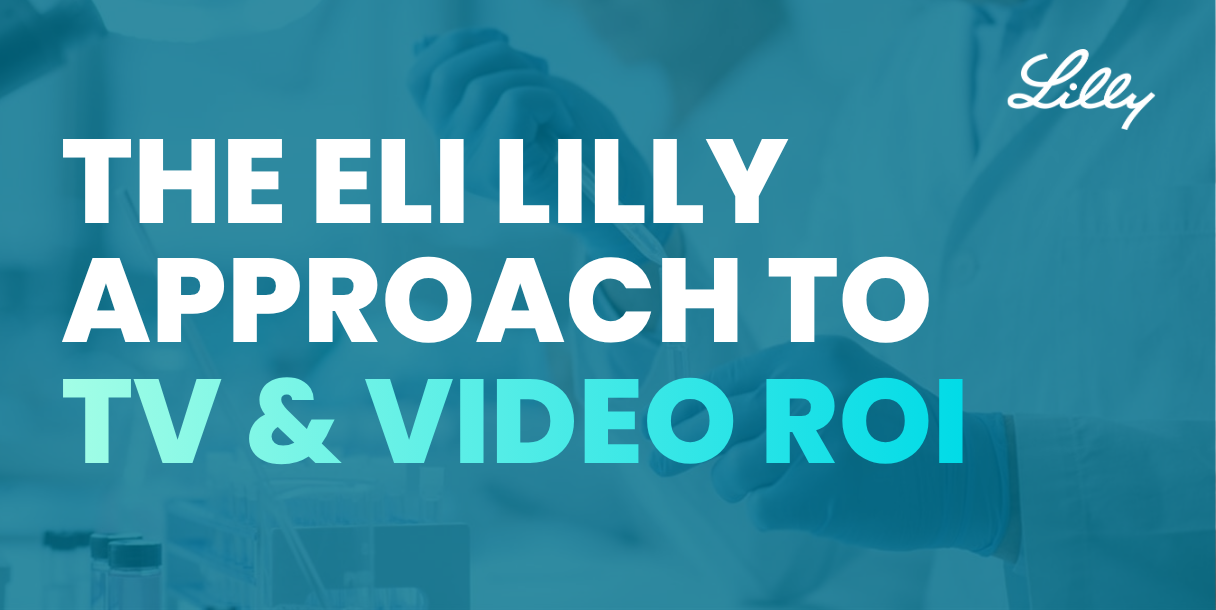As the media world changes at a breakneck pace, the key to success lies in adapting measurement to match consumer behavior. Zach Schroll, AVP of Consumer Analytics at Eli Lilly, and Whitney Teplitzky, Sr. Director of Customer Success at iSpot, recently had a conversation about tackling today’s chopped-up TV landscape. Ultimately, Eli Lilly’s focus is on driving business impact–which demands a fully unified approach to video advertising.
The Pharma Industry: Statistics You Need to Know
Pharma is a video powerhouse, but the cost and complexity of reaching audiences are rising. Zach and Whitney covered some critical statistics from the last eight months that call out this shift. Pharma ad spend has seen a significant 12.7% increase, yet overall impressions are down—signaling that brands are prioritizing quality over quantity and are willing to pay a premium to reach viewers. In the first half of this year alone, pharma brands poured about $3 billion into linear TV, capturing a 13.5% share of voice (SOV) by spend, but only a 6% SOV by impression volume. The smart move now is maximizing efficiency, ensuring every linear impression works harder for the spend behind it.
Zach stresses that for pharma—where every brand starts at “0% awareness” and has a short three-to-six-year window before potential obsolescence—linear TV remains indispensable. It delivers the sight, sound, and motion needed to communicate complex product benefits and safety details, often requiring longer ad formats to land.
Following the Consumer: The Shift to Unified Measurement
Streaming now commands more time spent than linear TV. For Eli Lilly, this means they “follow the consumer,” focusing not on linear and streaming in isolation, but on the screen in general. To keep up with this consumer shift and overcome previous barriers (like limited ad-supported opportunities), Zach’s team moved aggressively to Unified Measurement with iSpot. The most important “aha moment” for him was the data backing up this new reality.

A fully unified approach allows them to measure, for instance, a large buy like the Olympics, not just by the network (NBC), but by the event across all platforms (Peacock, digital, etc.). This ensures they are tracking incremental reach and justifying the premium they pay for major sponsorships.
Streaming Competitive: A Critical New Lens
For years, Zach noted, linear competitive data has been the “gold standard.” Digital competitive tracking, by contrast, has generally been unreliable. But the explosion of streaming demanded a more complete view of the competitive landscape.
Zach credits iSpot for making OTT and streaming competitive data reliable. This capability is critical because no longer can marketers only look at linear SOV; they need to look at the blend of TV and OTT to be confident in their actual share of voice. Understanding how competitors are behaving in the OTT space is essential for making smart channel balancing and investment decisions.

Making Every Dollar Work Harder: Creative and Frequency
Unified measurement provides Eli Lilly the deduplicated view necessary to prevent over-delivery, which is crucial for frequency management. While media partners use this for granular optimization, Zach’s team focuses on total channel-level views to ensure they are balancing investments across linear and OTT efficiently.
Zach stressed that creative is his favorite topic, citing that creative can account for 50-60% of total ad impact. Lilly tracks creative monthly, through iSpot, comparing performance against past ads and competitors to pinpoint when an ad is losing effectiveness. This insight is crucial for marketers who need to know when to iterate or launch new creative, especially given the challenges pharma faces in building distinctive brand assets.
Ultimately, the partnership between Eli Lilly and iSpot is about improving strategic decision-making in a world where speed and accuracy are paramount. By leveraging Unified Measurement and Creative Testing, they can move beyond impressions and focus on the data-backed business impact.
